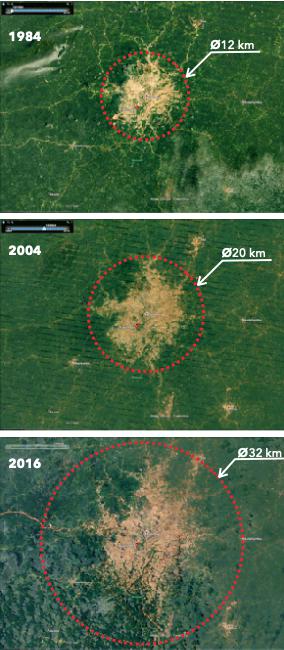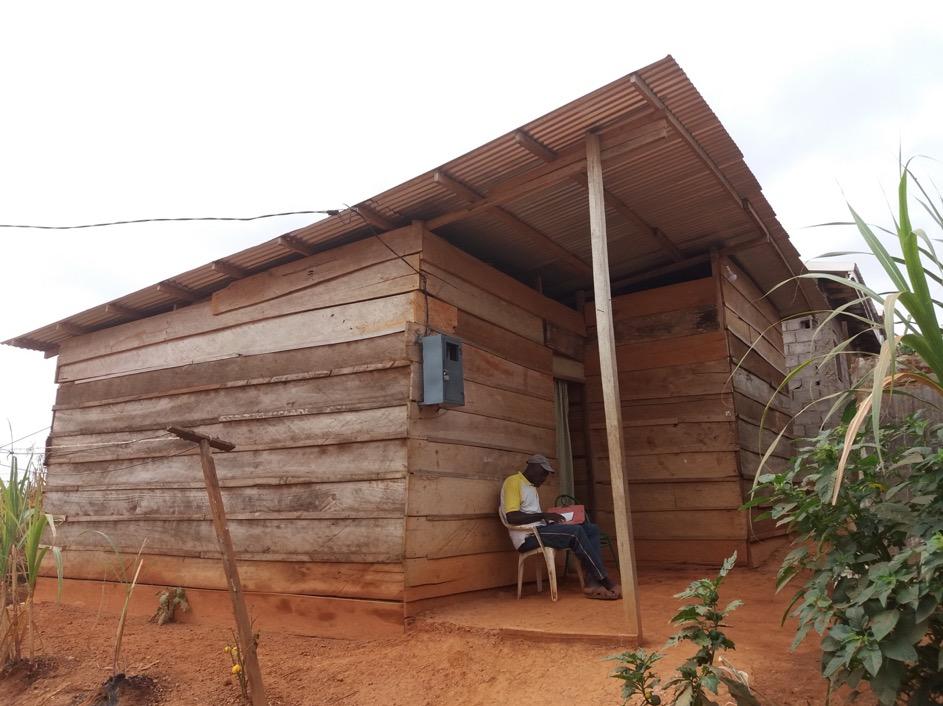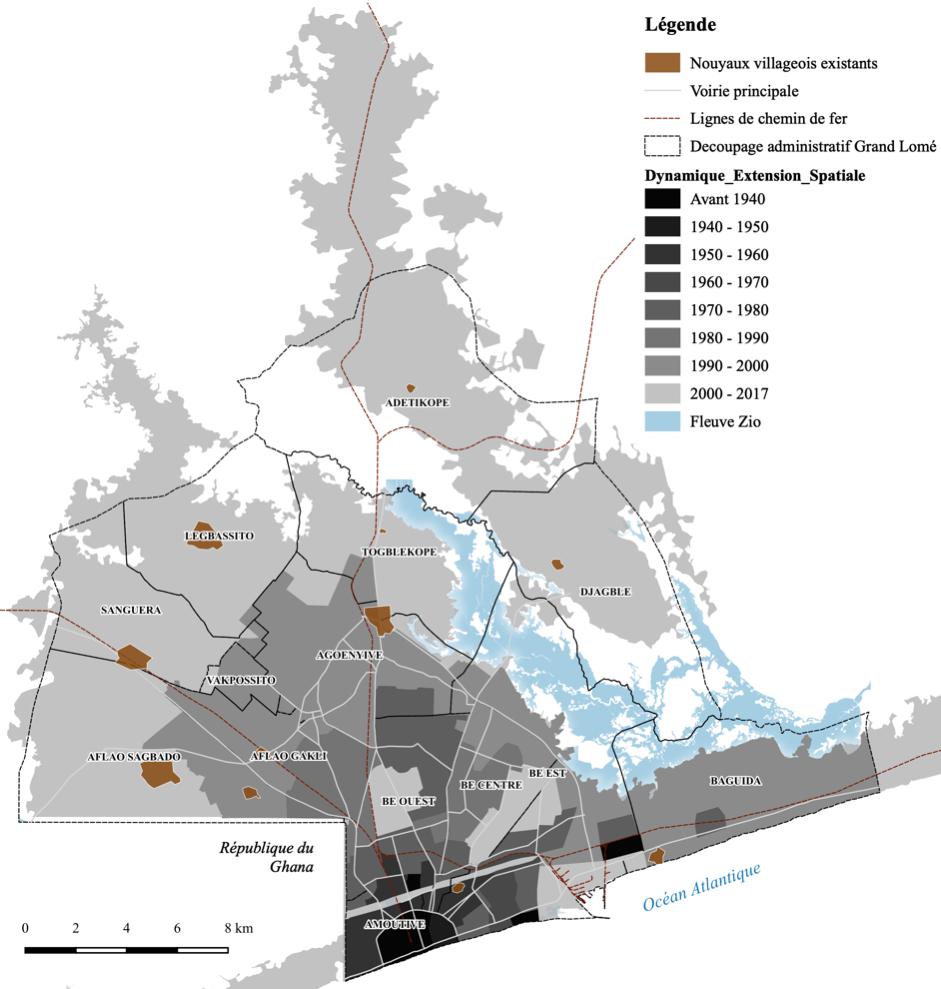Rethinking urban planning for sub-Saharan African cities

View of a district of Yaoundé, Cameroon. © Istock
For his thesis project at EPFL, Armel Kemajou studied the peri-urban areas of Lomé, Togo, and Yaoundé, Cameroon, where populations are expected to double in 20 years. He observed construction strategies that reflected coherent individual and collective approaches to planning, although they lay outside existing legal frameworks. Kemajou gives proposals for incorporating such an approach to construction, parting ways with urban planning patterned on European cities, which is unsuitable for these countries.
Africa’s increasingly urban populations are expected to double by 2050. This is leading to cities' exponential growth, something that is exceptionally difficult for many countries to manage. Most of these urban areas, such as the sprawling city of Lagos in Nigeria, are so vast that their boundaries are hard to identify. Africa’s new cities are being built in peri-urban areas that are able to absorb population growth. However, few countries have urban planning strategies that address this reality. Taken aback by how little these areas have been studied, Kemajou – a PhD in architecture student – decided to focus his thesis on them, and more specifically on the cities of Lomé in Togo and Yaoundé in Cameroon. On 8 December, Kemajou defended his thesis, carried at EPFL as part of the Urban and Regional Planning Community (CEAT), under the supervision of Jérôme Chenal. We sat down with Kemajou to talk about his work.
When studying the outlying areas of Lomé and Yaoundé, you found that a harmonious urban fabric existed, albeit one that has developed outside of legal frameworks.
There is a considerable gap between designed cities – as established in legislation and by urban planning policies – and a “lived” city that was built up by its residents day after day. This large disconnect means that there is no oversight regarding what is being built – and that’s mainly because existing urban planning instruments and legislation are basically holdovers from the colonial era, which, until now, were modelled on urban practices from Europe. But European cities are constructed differently, and their technical, human and financial resources are totally different. This means that these instruments are not realistic for Africa and thus inapplicable. The reality on the ground is more local and more socially complex than in Europe, and this needs to be taken into account.
There is a collective intelligence underlying how a city is constructed
Are you saying that current urban planning strategies won’t be able to meet the needs of a population that will double in 20 years?
In Yaoundé, the city's circumference has tripled over the last three decades. In Lomé, it has increased by a factor of 4.5. It’s clear that the resources to halt this urbanization are lacking, so a line must be drawn under what has been done. City officials can’t act as if everything that has been created by existing residents doesn’t exist. More robust and scalable plans that address this rapid urban expansion are needed.

So, city officials should factor in building methods that residents have already been using?
Yes, exactly. There is a collective intelligence underlying how a city is constructed. For my thesis, we interviewed about a hundred residents of Lomé and Yaoundé. We wanted to find out what kind of strategies they used to achieve home ownership, and how these strategies interconnect. We found an underlying wisdom and intelligent choices. When you come in with rigid assessment methods, you get the impression that it’s all very informal, place-specific and even incomprehensible. But underneath there are very clear rationales.
You can’t force people to adhere to a 1960s urban planning model that hasn’t changed since independence.
You’re saying that the built environment in these two cities' peri-urban areas is not informal?
Absolutely not. Very few people we spoke with moved to the outskirts out of frustration, or because they had no other choice. These are people who think things through, who make plans and carry them out. This produces something that urban theorists are not accustomed to, but it is nevertheless a valid way of constructing a city. Besides, if most of a city is “informal,” how do we determine what constitutes the “real” city? If we want to design an efficient model that is in line with reality on the ground, we should take as our starting point what the majority of people are actually doing.

Therefore, the new cities that are being designed and built on urban outskirts are the result of local construction strategies?
They’re the result of collective thinking, of know-how that people draw on to construct their own living space, one that suits their needs. They build their space on the scale of a home, but they also know how to make it part of their district, in association with their neighbors – an area where families can thrive, with collective social facilities, markets, children’s playgrounds, and so on. All of this takes place outside of any urban planning framework, because that framework can’t keep pace with these collective strategies.
But without a comprehensive approach to urban planning, won’t the limits of this strategy eventually become clear, given Togo and Cameroon’s rapid population growth?
In my thesis, I don’t advocate a laissez-faire approach – that would end in chaos. But the way urban construction is being addressed today is also not the right one. I recommend a collective urban planning method, one that can establish a dialogue among local governments, city planners, and the hundreds of thousands of “individual urban developers.” It’s at the intersection of these two ways of thinking that we will find the most appropriate form of urban planning. You can’t force people to adhere to a 1960s urban planning model that hasn’t changed since independence.
Très heureux de remettre le titre de Dr a Armel KEMJOU pour son superbe travail de recherche sur la construction des périphéries des #villeafricaines à #Lome et #Yaoundepic.twitter.com/93Qm12VinX
— Jerome CHENAL (@jchenal) December 8, 2020
Your interdisciplinary work lies at the crossroads of urban planning, social science and economics. It also includes research in law and engineering. How did you carry out your study?
To take an example, let’s say you want to study Geneva. All you need to do is submit a request to the canton and you have all the data you need in digital format. But when it comes to the very local reality of these two cities in Africa, where there is a dearth of basic data, we had to be creative in our methodology. Central to the study was a qualitative analysis of those hundred or so interviews we conducted with city residents, which we cross-referenced with more rigorous methods. To understand how people get around, we attached GPS devices to about fifty motorized cabs that serve the peri-urban areas. By combining this travel data with the interviews, we were able to measure the impact of transportation methods on the development of outlying areas. We rounded this out with interviews with experts, cartographic analyses of land values, and finally an assessment of the existing legal framework.
Could your thesis findings be immediately implemented by Togolese and Cameroonian city officials?
Studies like this one are, in my view, essential to achieving effective urban planning. I’m very happy that colleagues who are employed by these two cities attended my online defense. I was able to immediately share my recommendations with them. I will make my thesis findings available and I hope that they will eventually translate into policies consistent with my recommendations.

The four years I spent on my thesis were not long enough for me to address all the issues I wanted to investigate. But it gave me some good ideas for postdoctoral work, for honing my skills with professors in major institutions, and for being able, in the medium term, to place this knowledge at the service of municipalities in Cameroon and Togo. It would be pointless if this information were to remain only in European libraries.
"Understanding the construction of urban peripheries in Lomé and Yaoundé", Armel Kemajou
This research was conducted within the Communauté d'études pour l'aménagement du territoire (CEAT), under the supervision of Jérôme Chenal.